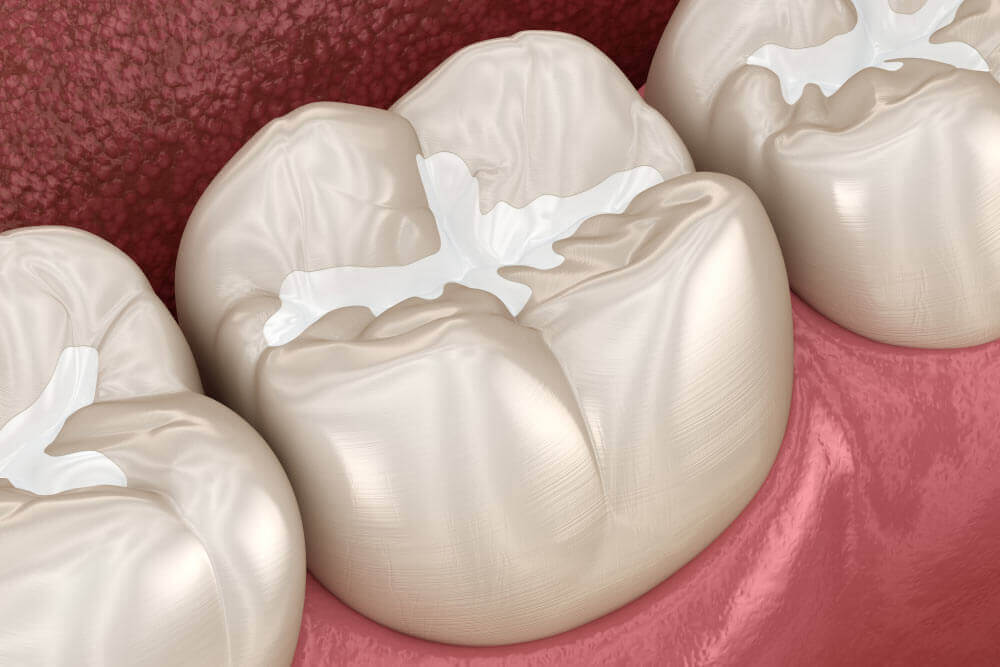Dentists use tooth-colored fillings to repair damaged teeth. The natural appearance of these fillings is due to their composite material, which is made from a mixture of plastic resins and powdered glass or quartz. Tooth-colored fillings are also sometimes referred to as white fillings or composite fillings. There are many benefits of using tooth-colored fillings, including: aesthetic appeal, durability, the ability to be customized for specific circumstances (such as when there’s inadequate space), ease of placement, and low risk for sensitivity issues post-treatment.
Did You Know?
Tooth-colored fillings help to preserve more of the tooth’s natural structure as compared to amalgam fillings. This is because composite resin can adhere directly to the tooth enamel and does not require significant tooth preparation.
Frequently Asked Questions:
Am I a candidate for tooth-colored fillings?
You may be a candidate for a tooth-colored filling if you have one or more teeth that has a small to medium area of damage or decay. However, larger areas of damage or decay may not be adequately restored by a tooth-colored filling. To determine if you are an ideal candidate for a tooth-colored filling, schedule a consultation with Dr. Dickey of Dickey Dental today!
What can I expect when having a tooth-colored filling placed at Dickey Dental?
When having a tooth-colored filling placed at Dickey Dental, you can first expect the affected tooth to be numbed with a dental anesthetic. Then Dr. Dickey will remove the decayed tissue and shape the tooth to prepare it for a filling. He will then apply the composite resin and then lightly cure your tooth with light to harden the material in place. The new filling will then be shaped and polished to complete the procedure.
Will I need to follow any special guidelines after my appointment?
After your appointment, you will have no special guidelines to follow since your tooth-colored filling is entirely completed during one appointment. In some cases, you may experience tooth sensitivity for a few days until your tooth has adapted to the new filling. You will need to care for your new filling like you would your natural teeth. This means brushing twice a day, flossing daily, and scheduling an exam and cleaning with Dr. Dickey every six months.


